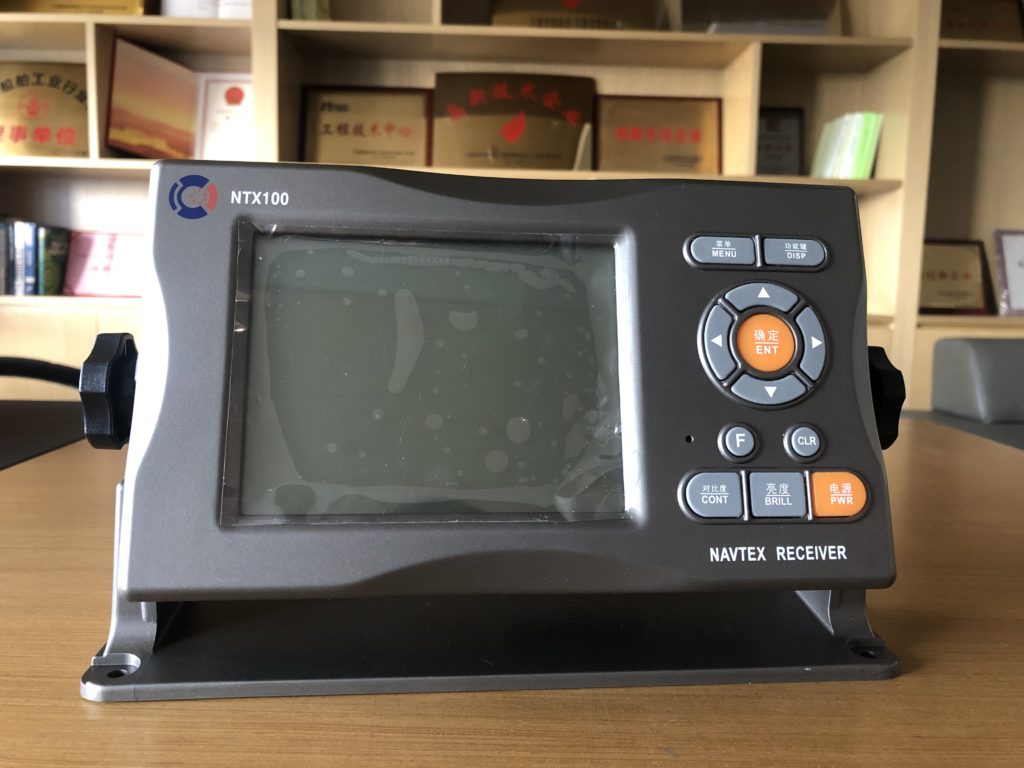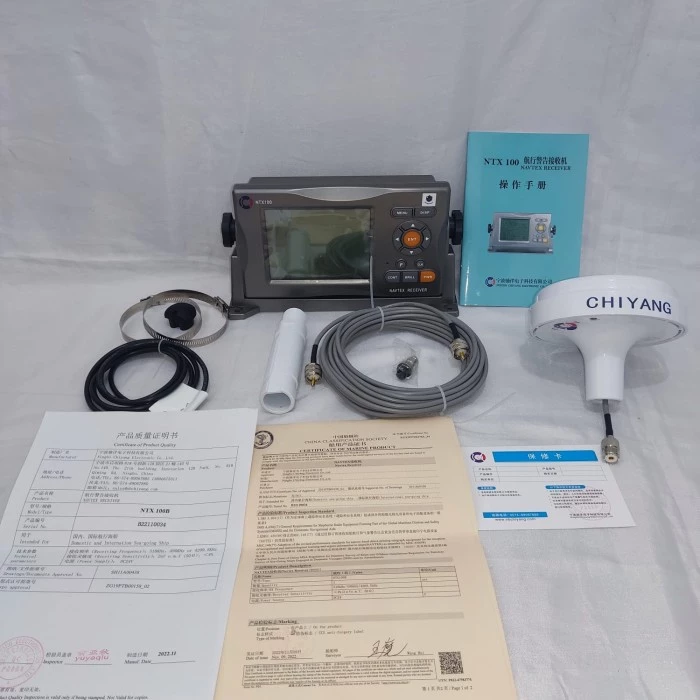NAVTEX, an acronym for NAVigational TEleX, is a crucial system utilized by ships worldwide to receive vital information automatically, without any user intervention. This system plays a significant role in ensuring the safety and efficiency of maritime operations by delivering navigational and meteorological warnings, forecasts, and urgent safety messages. In this article, we will delve into the intricacies of NAVTEX, exploring its functionality, usage, and benefits within the context of the Global Maritime Distress Safety System (GMDSS).
Table of Contents
- Introduction to NAVTEX
- The Medium Frequency Transmission
- Broadcasting Frequencies
- NAVTEX Stations and NAVAREAS
- Understanding NAVTEX Messages
- Subject Indicator Characters
- Transmission Cycle and Interference Avoidance
- NAVTEX Receivers: Simplicity and Functionality
- The Importance and Widely Adoption of NAVTEX
- Faq
Introduction to NAVTEX
NAVTEX is an integral component of the Global Maritime Distress Safety System (GMDSS), designed to improve safety and communication among ships at sea. By automatically relaying crucial information to vessels, NAVTEX minimizes the risk of accidents, enhances navigation, and aids in efficient decision-making by ship captains and crew members.


The Medium Frequency Transmission
NAVTEX relies on medium frequency (MF) radio waves for its transmission. These messages are encoded using a special character set and modulated using frequency shift keying (FSK) with a frequency shift of 170 Hz and a baud rate of 100 bits per second. The encoded messages are then printed out by the NAVTEX receiver on board the ship, which can also display them on a screen or store them in memory.
Broadcasting Frequencies
The primary frequency for NAVTEX broadcasts is 518 kHz, which employs English as the standard language. However, certain countries utilize 490 kHz for national broadcasts in their respective languages, such as Arabic, Chinese, French, Greek, Italian, Japanese, Korean, Portuguese, Russian, Spanish, and Turkish. In areas where medium frequency reception is challenging, such as polar regions or mountainous coasts, NAVTEX broadcasts are also transmitted on 4209.5 kHz.
NAVTEX Stations and NAVAREAS
To ensure effective distribution of NAVTEX messages, the world is divided into 21 NAVAREAS, including 5 Arctic areas. Each NAVAREA consists of one or more NAVTEX stations that adhere to a fixed transmission schedule. Each station is assigned a unique identifier, represented by a single letter from A to Z. For example, the identifier for the station in Abu Dhabi is D.
Understanding NAVTEX Messages
NAVTEX messages adhere to a standard format comprising seven parts: start of message, transmitter identity, subject indicator character, serial number of message, time of origin, message text, and end of message. The transmitter identity and subject indicator character enable filtering of unwanted messages by the NAVTEX receiver. Users have the option to select specific stations and message types based on their preferences and requirements.
Subject Indicator Characters
Subject indicator characters play a crucial role in classifying NAVTEX messages into various categories. There are nine categories in total: A for navigational warnings, B for meteorological warnings, C for ice reports, D for search and rescue information, E for meteorological forecasts, F for pilot service messages, G for AIS messages, H for LORAN messages, and L for additional navigational and meteorological warnings.
Transmission Cycle and Interference Avoidance
NAVTEX messages are transmitted at regular intervals following a four-hour cycle. Each station has a designated transmission time within this cycle to avoid interference with other stations. For instance, the station in Abu Dhabi transmits messages at 00:40 UTC and 04:40 UTC on 518 kHz, and at 01:40 UTC and 05:40 UTC on 490 kHz.
NAVTEX Receivers: Simplicity and Functionality
NAVTEX receivers are designed to be user-friendly and straightforward. They possess a built-in antenna capable of receiving medium frequency signals without requiring any external connections. These receivers are equipped with a printer that can produce hard copies of received messages on thermal or plain paper. Additionally, they feature a display to showcase messages on the screen. Some advanced NAVTEX receivers incorporate memory capabilities for storing messages, while others can interface with navigation equipment like GPS or ECDIS to provide position data or display NAVTEX messages on a chart.
The Importance and Widely Adoption of NAVTEX
NAVTEX serves as an invaluable system, providing ships with timely, reliable, and essential information to enhance their safety and operational efficiency at sea. Its usage extends to vessels of all types and sizes globally. One of the significant advantages of NAVTEX is its affordability and simplicity, as it does not entail any user fees or operator involvement.
In conclusion, NAVTEX plays a vital role in facilitating effective communication and information dissemination among ships. By providing navigational and meteorological updates, NAVTEX enhances safety and operational efficiency, making it an indispensable system for maritime operations worldwide.
FAQs
What does NAVTEX stand for?
NAVTEX stands for NAVigational TEleX.
What is the purpose of NAVTEX?
The purpose of NAVTEX is to provide ships with important navigational and meteorological warnings, forecasts, and urgent safety messages automatically and without any user intervention.
What frequencies are used for NAVTEX broadcasts?
The primary frequency for NAVTEX broadcasts is 518 kHz, while 490 kHz is used for national broadcasts in different languages. In some regions, NAVTEX broadcasts are made on 4209.5 kHz.
How are NAVTEX messages classified?
NAVTEX messages are classified into different categories based on subject indicator characters. These categories include navigational warnings, meteorological warnings, ice reports, search and rescue information, meteorological forecasts, pilot service messages, AIS messages, LORAN messages, and additional navigational and meteorological warnings.
How often are NAVTEX messages transmitted?
NAVTEX messages are transmitted at regular intervals following a four-hour cycle, with each station having a specific transmission time within the cycle to avoid interference.
What is the coverage area of NAVTEX?
NAVTEX has a global coverage area, ensuring that ships receive important information regardless of their location.
Who uses NAVTEX?
NAVTEX is utilized by various types of ships, including commercial vessels, fishing boats, and recreational boats.
Is NAVTEX mandatory for all ships?
While NAVTEX is not mandatory for all ships, it is highly recommended and widely adopted due to its significant safety benefits.
Can NAVTEX messages be customized based on ship preferences?
Yes, NAVTEX receivers allow users to select specific stations and message types according to their preferences and needs.
Are NAVTEX messages available in languages other than English?
Yes, some countries broadcast NAVTEX messages in their own languages, providing multilingual support for essential information.
Can NAVTEX messages be accessed by shore-based authorities?
NAVTEX messages are primarily intended for ships at sea. However, shore-based authorities may also have access to these messages for coordination purposes.
Is NAVTEX affected by weather conditions?
NAVTEX transmissions can be affected by adverse weather conditions or interference, especially in areas with challenging reception, such as polar regions or mountainous coasts.
Can NAVTEX messages be received by aircraft?
NAVTEX messages are specifically designed for maritime communication and are not intended for aircraft use.
Can NAVTEX receivers be integrated with other ship systems?
Yes, advanced NAVTEX receivers can interface with other navigation equipment, such as GPS or ECDIS, to provide additional functionalities and enhance situational awareness.
Are there any costs associated with using NAVTEX?
NAVTEX is a low-cost system that does not require user fees or operator involvement, making it accessible to ships of all sizes.
How is the NAVTEX system regulated internationally?
The International Maritime Organization (IMO) regulates and sets standards for the NAVTEX system on a global scale.
Are there alternative systems to NAVTEX for receiving maritime safety information?
Yes, in addition to NAVTEX, ships may also utilize other systems such as SafetyNET, which provides similar safety-related information through satellite communication.
Can NAVTEX messages be broadcasted in real-time?
NAVTEX messages are transmitted according to a fixed schedule, ensuring timely delivery of important information to ships.
Is NAVTEX used for transmitting distress signals?
NAVTEX primarily focuses on providing navigational and meteorological information and does not serve as a means for transmitting distress signals. Distress signals are handled by other components of the GMDSS.
Are there any limitations to the range of NAVTEX transmissions?
NAVTEX transmissions are subject to the limitations of medium frequency radio waves, and their range can vary depending on factors such as atmospheric conditions and geographical obstacles.


Latest Products
Onwa KM-8X 5-in-1 Marine Bundle Set Radome – GPS, Chartplotter, EchoSounder, AIS, Radar
8-inch GPS Chart Plotter with AIS and Radar
Onwa KM-8A (BUNDLE) 8-inch Color TFT LCD GPS Chart Plotter with Class B+ AIS Transponder MFD [BUNDLE]
Onwa KM-8C 8-inch Color TFT LCD GPS Chart Plotter with EchoSounder MFD